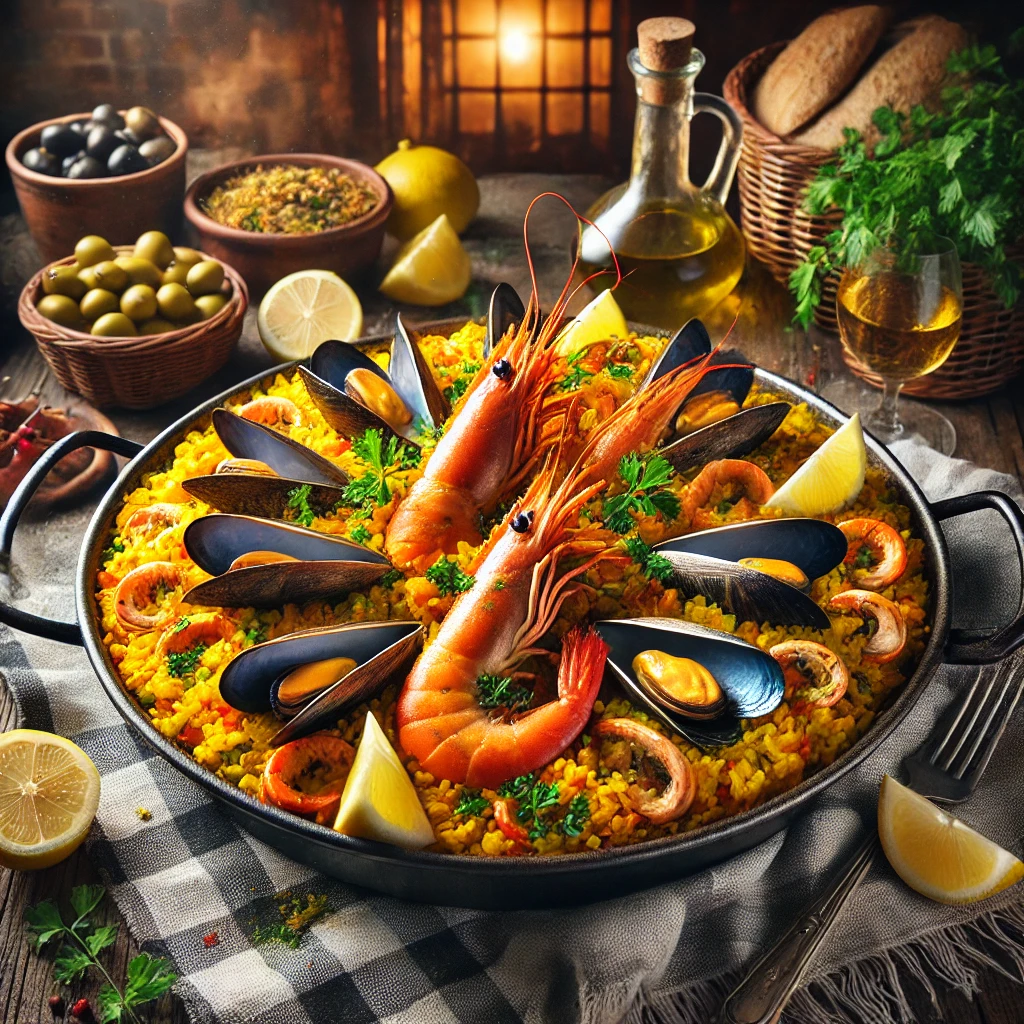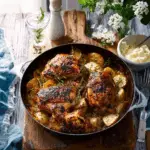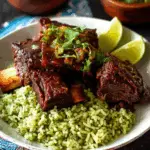Paella is more than just a dish; it’s a vibrant symbol of Spain’s rich culinary heritage, with deep roots in the region of Valencia. This iconic Spanish dish, known for its colorful presentation and robust flavors, is a true representation of the Mediterranean diet. Paella has evolved over the centuries, but its essence remains rooted in tradition. In this blog post, we’ll delve into the history, essential ingredients, preparation techniques, and variations of authentic Spanish paella, offering you a comprehensive guide to creating this beloved dish at home.
The Origins of Paella: A Historical Overview
Paella’s history is as rich and complex as the flavors that define it. The dish originated in Valencia, a region on Spain’s eastern coast, during the mid-19th century. The word “paella” is derived from the Old French word “paelle,” which means pan, and it refers to the wide, shallow cooking vessel traditionally used to prepare the dish.
Valencia’s fertile lands, irrigated by the Turia River, were ideal for rice cultivation, which the Moors introduced to Spain around the 10th century. Over time, rice became a staple in the region, leading to the creation of various rice dishes. Paella, however, stands out as the most iconic.
Originally, paella was a humble, rural dish cooked by farmers and laborers over an open fire. It was made with whatever ingredients were readily available—often including rabbit, chicken, snails, and vegetables. The dish was cooked in a single pan, making it a practical and communal meal that brought people together.
As paella gained popularity, it evolved into different variations, with seafood versions becoming particularly popular along the coast. Today, paella is celebrated as a national dish of Spain, enjoyed by locals and visitors alike, and is often served at family gatherings, festivals, and special occasions.
The Essential Ingredients of Authentic Paella
Authentic paella is defined by its ingredients, many of which are specific to the region of Valencia. While there are numerous variations, a few key components are essential for creating a traditional paella:
1. The Rice
Rice is the heart of paella, and the type of rice used is crucial to the dish’s success. Bomba rice, a short-grain variety native to Spain, is the preferred choice due to its ability to absorb liquid while maintaining its texture. Bomba rice can absorb up to three times its volume in broth without becoming mushy, making it ideal for paella. If Bomba rice is unavailable, Calasparra rice is a good alternative.
2. The Pan
The pan used to cook paella is called a paellera. It’s a wide, shallow pan with sloping sides, designed to allow the rice to cook evenly in a single layer. The large surface area helps the liquid evaporate quickly, ensuring that the rice develops a perfect texture. The paellera is traditionally made of carbon steel, which heats up quickly and evenly, although modern versions can also be found in stainless steel or enamel.
3. The Broth
The broth, or stock, is where much of the paella’s flavor comes from. A rich, homemade broth made from simmering meat, seafood, or vegetables is essential. For a Valencian paella, the broth is typically made with chicken, rabbit, and snails, while a seafood paella uses a broth made from fish bones, shrimp shells, and other seafood.
4. The Sofrito
The sofrito is a base of sautéed onions, garlic, and tomatoes that forms the foundation of the paella. This mixture is slowly cooked until it becomes a rich, flavorful paste, adding depth and complexity to the dish. Some versions also include peppers, pimentón (smoked paprika), and saffron for added color and flavor.
5. The Proteins
Authentic Valencian paella typically includes a mix of chicken, rabbit, and snails, along with green beans and garrofó (a type of large white bean native to Valencia). Seafood paella might feature a combination of shrimp, mussels, clams, squid, and fish. In some regions, chorizo or other types of sausage are added, although this is a more modern adaptation and somewhat controversial among purists.
6. The Saffron
Saffron is an essential ingredient in paella, giving the dish its signature golden color and distinctive flavor. The threads of saffron are lightly toasted and steeped in warm broth before being added to the paella, ensuring that their full flavor and color are released.
Preparing Authentic Paella: Step-by-Step Guide
Making authentic paella is an art that requires patience, attention to detail, and a love for good food. Here’s how to prepare a traditional Valencian paella:
1. Prepare the Ingredients
Before you start cooking, it’s essential to have all your ingredients prepped and ready. Cut the chicken and rabbit into serving-sized pieces, clean the seafood (if using), and prepare the sofrito. Measure out your rice, and have your broth simmering on the stove, infused with saffron.
2. Sear the Meat
Heat a generous amount of olive oil in the paellera over medium-high heat. Once the oil is hot, add the chicken and rabbit pieces, seasoning them with salt. Sear the meat until it’s golden brown on all sides, which helps to develop the dish’s rich flavor. Remove the meat from the pan and set it aside.
3. Cook the Sofrito
In the same pan, add the chopped onions, garlic, and tomatoes, along with any additional sofrito ingredients you’re using, such as peppers or pimentón. Cook the mixture slowly, stirring frequently, until it becomes a thick, fragrant paste. This process can take about 10-15 minutes, but it’s essential for building the dish’s flavor base.
4. Add the Rice
Once the sofrito is ready, add the rice to the pan, stirring it into the sofrito until each grain is well-coated. This step, known as “tostar el arroz,” or toasting the rice, helps to lock in the flavors and ensures that the rice cooks evenly.
5. Add the Broth and Meat
Pour the hot broth over the rice, ensuring that it covers the rice evenly. Add the seared meat back into the pan, along with any other proteins or vegetables you’re using. Stir everything together once to evenly distribute the ingredients, then stop stirring. From this point on, the paella should cook undisturbed to allow a crust, known as socarrat, to form on the bottom of the pan.
6. Simmer the Paella
Lower the heat to medium and let the paella simmer. The liquid should be absorbed gradually as the rice cooks. Depending on the type of rice and the pan size, this can take 15-20 minutes. If the rice is not fully cooked when the liquid is absorbed, add a little more hot broth or water to the pan, but be careful not to stir the rice.
7. Rest and Serve
Once the rice is tender and the liquid has been absorbed, remove the paella from the heat. Cover the pan with a clean kitchen towel or aluminum foil and let it rest for about 5-10 minutes. This resting period allows the flavors to meld and the socarrat to develop fully.
To serve, bring the paella pan directly to the table. Paella is traditionally eaten straight from the pan, with each person using a wooden spoon or fork to scoop out their portion. Enjoy it with a glass of Spanish wine, and savor the communal experience that paella embodies.
Variations of Paella: Exploring Regional Differences
While Valencian paella is the most traditional, there are many regional variations of paella, each with its own unique ingredients and flavors. Here are a few popular examples:
1. Seafood Paella (Paella de Marisco)
This version of paella omits meat and focuses on a variety of seafood, including shrimp, mussels, clams, and squid. The broth is typically made from fish stock, and the dish is flavored with saffron, garlic, and paprika. Seafood paella is especially popular in coastal regions and is often enjoyed during the summer months.
2. Mixed Paella (Paella Mixta)
As the name suggests, mixed paella combines both meat and seafood, often including chicken, rabbit, shrimp, mussels, and chorizo. While this version is less traditional, it’s popular with those who enjoy a variety of flavors and textures in one dish.
3. Paella Negra (Arroz Negro)
Paella Negra, also known as black rice, is a striking variation made with squid ink, which gives the dish its distinctive black color. The squid ink also imparts a rich, briny flavor that pairs well with seafood. This version is typically made with squid, cuttlefish, and prawns.
4. Vegetarian Paella (Paella de Verduras)
For those who prefer a meatless option, vegetarian paella is a delicious alternative. This version features a variety of seasonal vegetables, such as artichokes, bell peppers, green beans, and tomatoes, cooked in a flavorful vegetable broth. Saffron and pimentón add depth to the dish, while the socarrat provides the desired texture.
The Paella Experience: A Cultural Tradition
Paella is more than just a meal; it’s a cultural experience that reflects the values of Spanish society—community, family,






